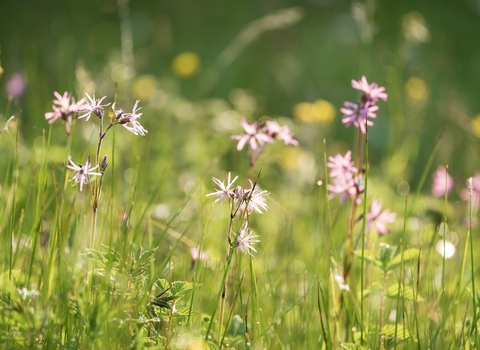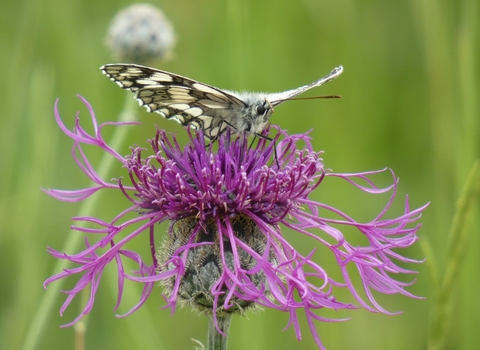Tragically, the UK has lost 97% of wildflower meadows in the last 90 years as farming practices have changed and towns and villages have expanded to swallow up flower-rich fields.
Thankfully, many farmers, conservation charities and communities work hard to maintain and restore these now rare and precious species-rich habitats for wildlife. Wild orchids, bellflowers, hellebores, plantain, field scabious and saxifrage are some of the many beautiful wildflowers found, spreading across fields in a pastel blush, as hoards of butterflies and moths flutter in amongst the stems and grasshoppers chirrup in the long grass.
The recent State of Yorkshire’s Nature report found that landscapes formed on limestone, including the belt running down the centre of our region, the chalk underpinning the Wolds and those the Trust is caring for through the Wild Ingleborough programme in the Dales, are key wildlife habitats in Yorkshire.
Limestone grassland meadows protect our most important Yorkshire Stronghold Species, those found in few or no other place, and give a home to Species of Conservation Concern.




